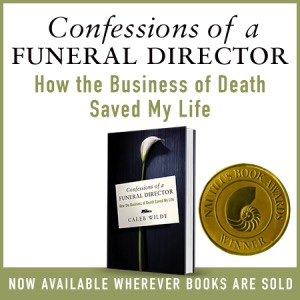5 Cultural Attitudes Toward Death
The following are large-scale cultural attitudes towards death.
These are taken verbatim from “Death and Dying, Life and Living”:
1. Tame Death: Death is familiar and simple; thatis, it is regarded as inevitable and not attempt is made to evade it. Persons who are dying typically calmly await their deaths, usually surrounded by loved ones and members of the community, all of whom wait peacefully for the end. In other words, death is a public event. A major focus of attention is the community; it is deeply affected by the loss of one of its necessary participants. Death is also seen as a sort of sleep; either one is awakened at some point to eternal bliss, or one remains eternally asleep.
2. Death of the self: The focus of attention is on the one who dies. Death produces great anxiety in that person because it is believed that one is either rewarded or punished in his or her future state. Death of the self involves a final testing period, and what one does at this moment determines what will happen to one after death (and indeed the meaning of one’s whole life). Several religious traditions have some such belief. For instance, some Jews believe that it is important at the moment of death to recite the Shema. Muslims are taught that invoking the Divine Name at the moment of death can be salvific. And some Buddhists hold that chanting the name of Amitabha Buddha at this point in one’s life will ensure that one will end up in the Pure Land after death. In the West, this attitude once led to the development of a formal ares moriendi, an art of dying well.

3. Remote and Imminent death: One’s attitude toward death is basically highly ambivalent. Death is viewed as a wholly natural event (not a supernatural one), but still great effort is made to keep it at a distance. It is both natural and dangerous, inviting and repelling, beautiful and to be feared.
4. Death of the other: Here, the main focus of attention is on the survivors. Death primarily involves the breaking of relationships. For survivors, it results in an intolerable separation from the one who dies. Feelings and behaviors may go nearly out of control (wailing, keening, throwing oneself in the grave, etc.). For the one who dies, death is primarily a period of waiting to be rejoined with loved ones in some other state.
5. Death denied / forbidden death: Death is seen as being dirty or indecent (even “pornographic). Thus, it is offensive to die in public. Dying persons are therefore more or less isolated from the rest of the community. The very fact that the person is dying is denied, both to that person and to those around her or him. Emotions, both before and after the death are to be kept hidden, and huts mourning may be seen as morbid or even pathological. (Pages 55 -56)
Here’s three questions:
Which attitude most describes your personal attitude towards death?
Which attitude are you least familiar with?
Which attitude do you think best describes the West?
